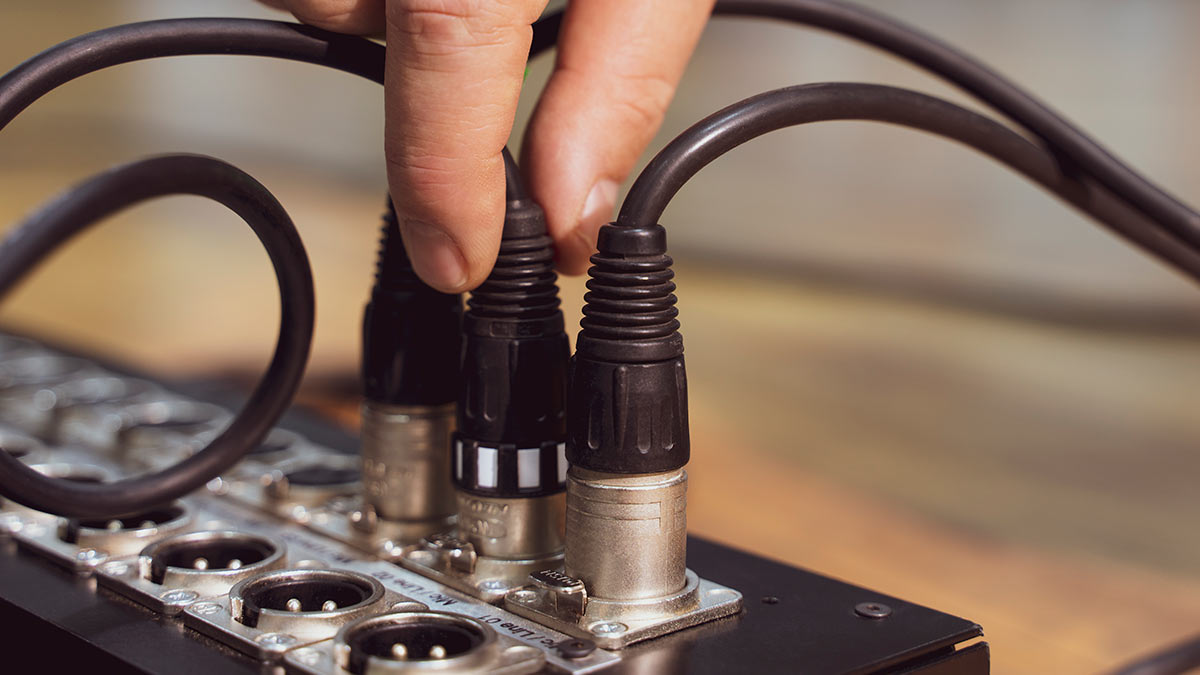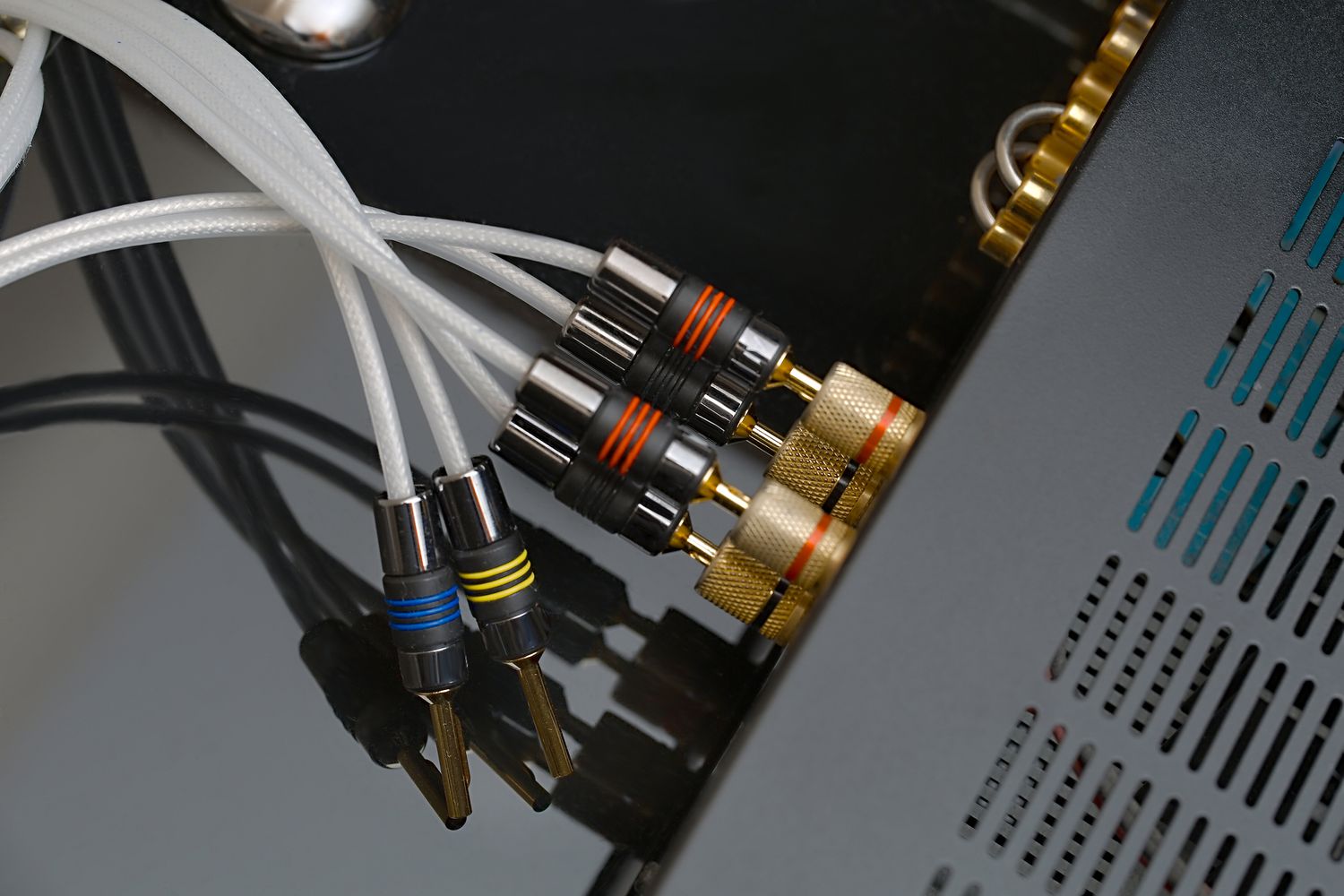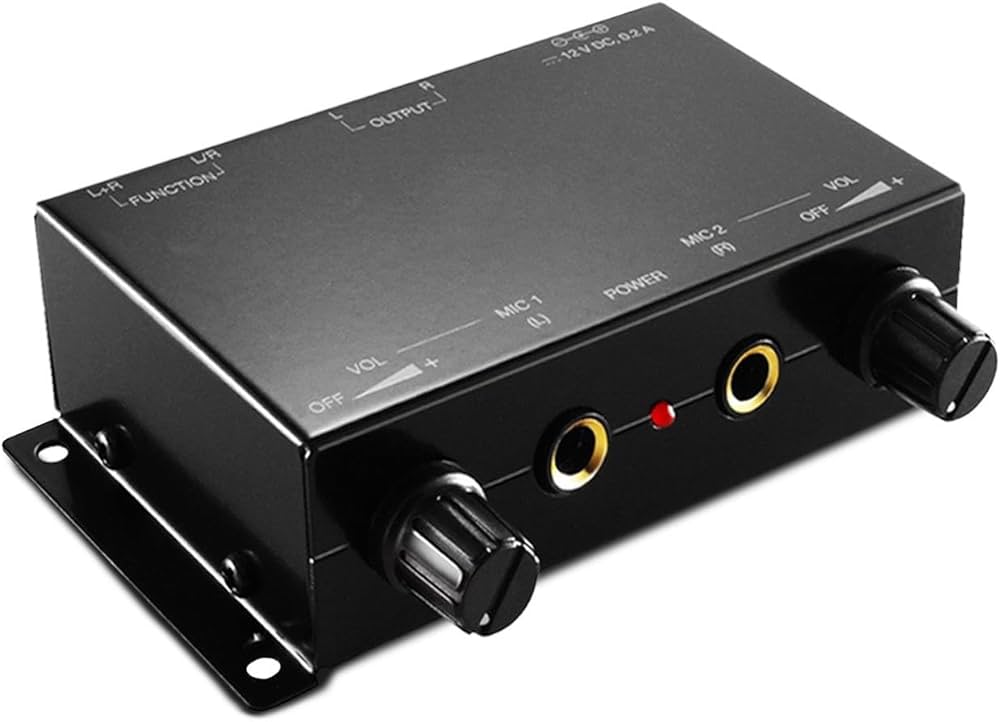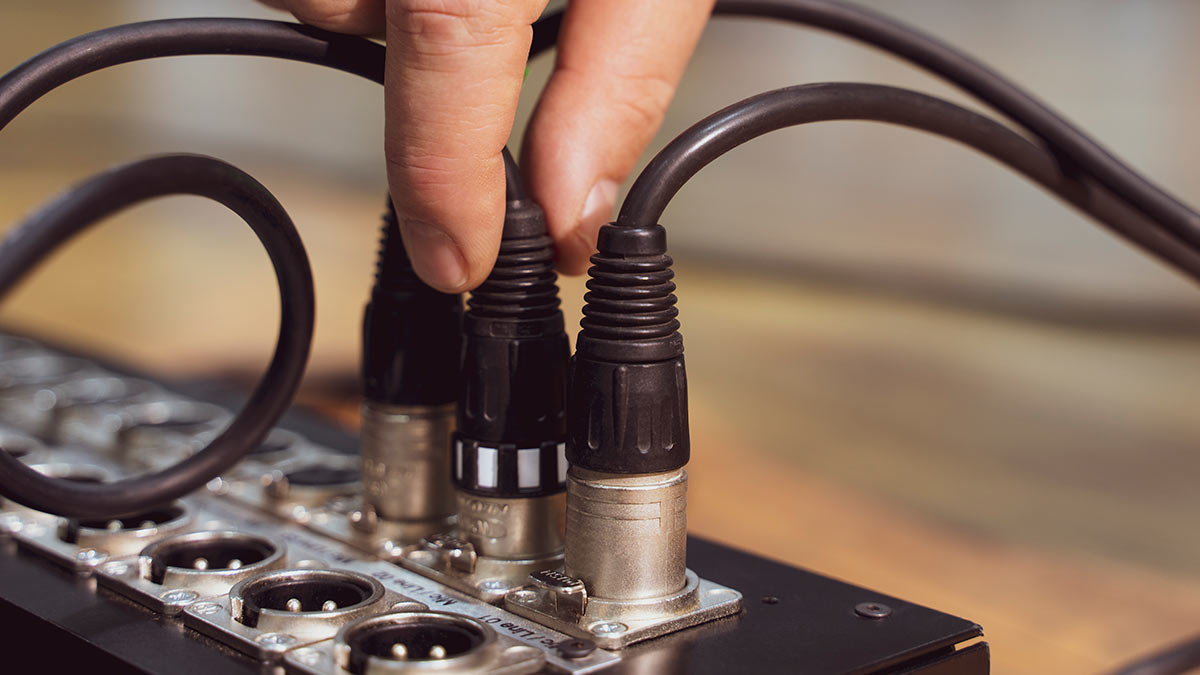Home>Production & Technology>Audio Cable>How To Use Virtual Audio Cable In Teamspeak


Audio Cable
How To Use Virtual Audio Cable In Teamspeak
Modified: January 22, 2024
Learn how to use Virtual Audio Cable in Teamspeak to enhance your audio experience. Connect and route audio signals seamlessly using this powerful Audio Cable.
(Many of the links in this article redirect to a specific reviewed product. Your purchase of these products through affiliate links helps to generate commission for AudioLover.com, at no extra cost. Learn more)
Table of Contents
Introduction
Welcome to the world of virtual audio cables! If you are a fan of high-quality audio and communication, then you’ve probably heard of virtual audio cables and their ability to enhance your audio experience. In this article, we will delve into the concept of virtual audio cables and how you can utilize them in Teamspeak, a popular voice communication software.
For those who may be unfamiliar, virtual audio cables are software-based audio devices that allow you to route audio signals between different applications or devices on your computer. They act just like physical cables but within your computer’s software environment, making it possible to transfer audio signals without the need for additional physical connections.
Virtual audio cables are incredibly versatile and can be used for various purposes. They are commonly employed by audio enthusiasts, content creators, and gamers who wish to improve their audio setup and enhance communication while using voice chat applications like Teamspeak.
Teamspeak is a leading voice chat software that enables seamless communication between users, whether it’s for gaming, remote work collaboration, or casual conversations. By utilizing virtual audio cables in conjunction with Teamspeak, you can take your audio experience to the next level.
In this article, we will guide you through the process of setting up virtual audio cables and configuring them with Teamspeak. We will also provide some helpful tips for testing and troubleshooting any issues you may encounter along the way. So, let’s get started and explore the fascinating world of virtual audio cables for Teamspeak!
What is Virtual Audio Cable?
Before we dive into the specifics of using virtual audio cables in Teamspeak, let’s take a moment to understand what exactly virtual audio cables are.
Virtual audio cables, often referred to as VAC or VACs, are software-based audio devices that simulate the functionality of physical audio cables. They create virtual connections between different audio sources and destinations within your computer’s software environment.
These virtual audio cables work by intercepting audio data from one application or device and routing it to another. This allows you to transfer audio signals between different software applications or devices on your computer without the need for physical connections.
Virtual audio cables are highly versatile and can be used for various purposes. Here are a few examples:
- Audio Recording: With virtual audio cables, you can route audio from one application, such as a music player or a microphone, to another application, such as a digital audio workstation (DAW) for recording.
- Audio Streaming: If you want to stream audio from one application, like a media player, to another application or streaming platform, virtual audio cables can facilitate this process.
- Audio Mixing: Virtual audio cables allow you to mix audio from different sources and route them to a single destination, such as a virtual mixer or video editing software.
- Communication Enhancement: This is where virtual audio cables come in handy for Teamspeak. By using a virtual audio cable, you can route audio from Teamspeak to other applications, such as music players or voice-changing software, to enhance your communication experience.
Virtual audio cables provide a flexible and powerful solution for audio routing within your computer. They give you the ability to customize your audio setup, improve audio quality, and create unique audio configurations tailored to your specific needs.
Now that we have a better understanding of virtual audio cables, let’s proceed to the next section, where we will discuss how to set up virtual audio cables and configure them with Teamspeak.
Setting Up Virtual Audio Cable
Now that you have a grasp of what virtual audio cables are, it’s time to set them up on your computer. Follow the steps below to get started:
- Choose a Virtual Audio Cable Software: There are several virtual audio cable programs available, such as VB-Audio Virtual Cable, Virtual Audio Cable by Eugene Muzychenko, and Voicemeeter Banana. Research and select the software that best suits your needs.
- Download and Install the Software: Once you have chosen the virtual audio cable software, visit the official website and download the latest version. Follow the installation instructions to install the software on your computer.
- Open the Virtual Audio Cable Software: Launch the installed virtual audio cable program. You will typically find a control panel or configuration window where you can customize the audio routing settings.
- Create Virtual Cables: In the virtual audio cable software, you will have the option to create virtual cables. These cables act as the virtual connections between different audio sources and destinations. Create the desired number of virtual cables based on your specific requirements.
- Configure Audio Sources and Destinations: After creating the virtual cables, you need to configure the audio sources and destinations. This involves specifying which applications or devices will be sending audio signals and where those signals will be routed. The exact configuration process may vary depending on the virtual audio cable software you are using. Refer to the software documentation or online tutorials for detailed instructions.
- Test and Fine-Tune: Once you have set up the virtual audio cables and configured the audio sources and destinations, it’s important to test the setup thoroughly. Play audio from different applications and ensure that they are being routed correctly through the virtual cables. Use the control panel or configuration window of the virtual audio cable software to make any necessary adjustments or fine-tuning.
By following these steps, you can successfully set up virtual audio cables on your computer. Now that you have your virtual audio cables in place, it’s time to integrate them with Teamspeak. In the next section, we will explore how to configure Teamspeak to utilize virtual audio cables for enhanced communication.
Configuring Teamspeak with Virtual Audio Cable
Now that you have set up your virtual audio cables, let’s proceed with configuring Teamspeak to utilize them for enhanced audio communication. Follow the steps below:
- Open Teamspeak: Launch the Teamspeak application on your computer.
- Access Settings: In the Teamspeak interface, navigate to the “Settings” option. This is usually located in the top menu bar or represented by a gear icon.
- Select Options: In the Settings menu, look for the “Options” tab or a similar option.
- Audio Settings: Within the Options menu, locate the “Audio Settings” or “Audio” tab. This is where you can configure the audio input and output settings.
- Set Virtual Audio Cable as Output Device: In the Audio Settings, select your virtual audio cable as the output device. This will ensure that the audio from Teamspeak is routed through the virtual cable.
- Adjust Volume and Quality: Depending on your preferences, you may need to adjust the volume and quality settings within the Teamspeak Options. Make any necessary adjustments to ensure optimal audio experience.
- Test the Configuration: Once you have configured Teamspeak to use the virtual audio cable as the output device, it’s essential to test the configuration. Connect to a Teamspeak server and engage in a voice conversation. Verify that your audio is being routed correctly through the virtual audio cable.
Congratulations! You have successfully configured Teamspeak to use virtual audio cables for enhanced audio communication. With this setup, you can now enjoy improved audio quality, customizable audio routing, and seamless integration with other applications.
It’s worth noting that the exact steps may vary slightly depending on the version of Teamspeak and the virtual audio cable software you are using. However, the general concept of selecting the virtual audio cable as an output device remains consistent across most configurations.
In the next section, we will cover some testing and troubleshooting tips to help you ensure optimal performance of your virtual audio cable setup in Teamspeak.
Testing and Troubleshooting
After setting up virtual audio cables and configuring Teamspeak, it’s important to test your setup and troubleshoot any potential issues that may arise. Here are some helpful tips:
- Test Audio Routing: Play audio from different applications while in a Teamspeak voice conversation. Check if the audio is being routed correctly through the virtual audio cables. Adjust the routing settings if necessary.
- Check Audio Levels: Ensure that the audio levels are balanced and not too low or too loud. Use the volume control settings in Teamspeak and the virtual audio cable software to make adjustments if needed.
- Verify Audio Quality: Pay attention to the audio quality during conversations. If you notice any distortions, echoes, or other audio issues, try adjusting the audio settings in Teamspeak and the virtual audio cable software. You can also check your microphone and speaker settings to ensure they are properly configured.
- Update Software: Keep your virtual audio cable software and Teamspeak updated to the latest versions. Software updates often include bug fixes and performance improvements that can enhance the stability and functionality of your setup.
- Restart Applications: If you encounter any unexpected issues, try restarting Teamspeak and the virtual audio cable software. This can help resolve temporary glitches and restore proper functionality.
- Check Hardware Connections: If you’re experiencing audio issues, double-check your hardware connections, such as your speakers, microphone, and headphones. Ensure they are plugged in correctly and functioning properly.
- Consult Documentation and Support: If you encounter persistent issues or need more specific troubleshooting guidance, refer to the documentation or online resources provided by the virtual audio cable software and Teamspeak. Additionally, you can reach out to their support teams for assistance.
By following these tips, you can effectively test and troubleshoot your virtual audio cable setup in Teamspeak. Remember that every system configuration is unique, so it may take a bit of experimentation and adjustment to achieve the desired audio experience.
Now that you have a solid understanding of virtual audio cables, how to set them up, configure Teamspeak, and troubleshoot any potential issues, you are ready to enjoy enhanced audio communication. With virtual audio cables, you can truly elevate your Teamspeak experience and immerse yourself in crystal-clear audio.
Before we conclude, let’s summarize the key points covered in this article.
Conclusion
Virtual audio cables offer a powerful solution for enhancing your audio experience in Teamspeak and other applications. With the ability to route audio signals within your computer’s software environment, virtual audio cables enable you to customize your audio setup, improve audio quality, and create unique audio configurations.
In this article, we explored the concept of virtual audio cables and discussed how to set them up on your computer. We also provided step-by-step instructions for configuring Teamspeak to utilize virtual audio cables for enhanced communication.
Throughout the setup process, we emphasized the importance of testing and troubleshooting to ensure optimal performance. By testing audio routing, checking audio levels and quality, updating software, and verifying hardware connections, you can identify and resolve any issues that may arise.
Using virtual audio cables in Teamspeak opens up a world of possibilities for audio customization. Whether you’re a gamer looking to improve voice communication, a content creator seeking better audio recording options, or an audio enthusiast exploring new configurations, virtual audio cables can elevate your audio experience.
Remember to consult the documentation and support resources provided by the virtual audio cable software and Teamspeak for additional guidance specific to your setup.
Now that you are equipped with the knowledge to utilize virtual audio cables in Teamspeak, it’s time to bring your audio communication to the next level. Enjoy crystal-clear conversations, immersive soundscapes, and the flexibility to create your own unique audio configurations.
Harness the power of virtual audio cables and let your voice be heard with precision and clarity!











